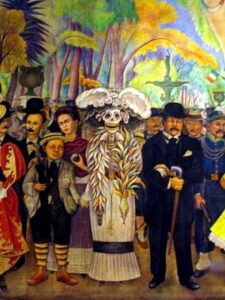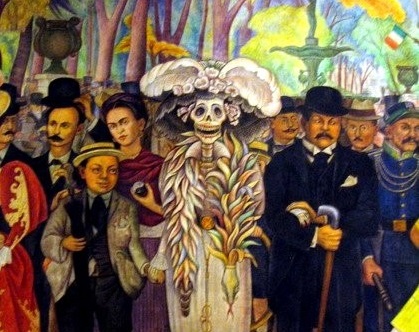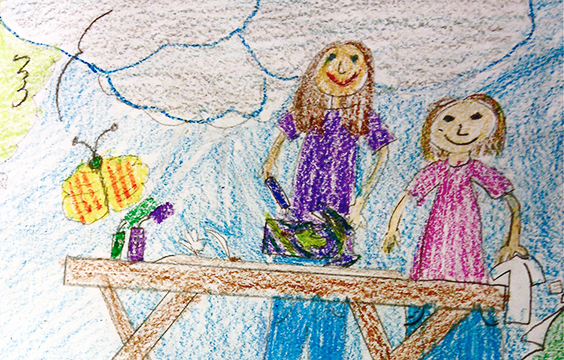In this lesson plan, former New York University Writers in the Schools Fellow Sarah LaBrie introduces fifth-graders to the world of writing fantasy. Her method includes group reading, writing, and brainstorming as ways to kick-start ideas before moving into vibrant, detailed writing that can combine our world with the fantastic.
Lesson Overview
Grade(s) Taught: 5th
Genre(s) Taught: Fantasy Fiction
Download: Fantasy with Fifth-Graders
Common Core State Standards: (Refer to English Language Arts Standards > Writing > Grade 5 )
- ELA-LITERACY.W.5.3.A
Orient the reader by establishing a situation and introducing a narrator and/or characters; organize an event sequence that unfolds naturally. - ELA-LITERACY.W.5.3.D
Use concrete words and phrases and sensory details to convey experiences and events precisely. - ELA-LITERACY.W.5.10
Write routinely over extended time frames (time for research, reflection, and revision) and shorter time frames (a single sitting or a day or two) for a range of discipline-specific tasks, purposes, and audiences.
Guiding Questions:
- What is a fantasy protagonist?
- How can we use sensory perception to create a believable character?
- How can we combine character, and sensory perception to expand description of setting?
- How can we use a character’s wants, needs, desires, and emotions as they relate to a setting to start a story?
LESSON

Introduction: “Choosing a hero”: I read an early passage from a familiar fantasy novel, The Lightning Thief, that deals with a fantastical hero and his/her attempts to escape from a specific place. Together, we come up with a list of the different elements of a fantasy protagonist, using Percy Jackson—the main character in the book—as an example; e.g., ability to use magical tools, special qualities, a sense of being “chosen” for a quest, etc.
We talk about how we can understand a main character better if we understand his emotional and physical reactions to his surroundings. We also briefly discuss potential fantasy environments. Do fantasies have to take place in another world or can they take place in this world? Where did Percy Jackson’s story begin? How will you decide where to set your story?
Main Activity: With the participation of the class, I model the following prompt: Your hero wakes up in a mysterious place to discover that she is wearing a blindfold that cannot be removed. What could you put after the prompt “I see only darkness…” to have the hero put together sensory clues about that place using her five senses. Write what the students suggest on the board, and then discuss what place they think they’ve described.
I introduce the concept of a talisman, an object important to the protagonist’s life. I have some examples of talisman props ready to share, and have students brainstorm other objects we might use as talismans in our stories.
Now we transition into independent writing. Students begin with their own response to the first prompt, and move on to the connecting one: First, help your character devise a blind escape using a talisman. Then, discuss what your character’s choices tell us about the character.
Closing: Students share in small groups, with time left for feedback on other interpretations of what the characters’ choices could tell us about them.
Materials:
Percy Jackson and the Olympians: The Lightning Thief, Rick Riordan
Talisman props
Lots of room to write on the board
Vocabulary:
Talisman, character, sensory perception, fantasy
Multi-Modal Approaches to Learning:
This lesson appeals to aural learners, hearing the model text read aloud; kinesthetic and visual learners, picturing a scenario using four of the senses that inform and allow the creation of a mental image; interpersonal learners, answering a prompt as a class and group brainstorming; and intrapersonal learners, with time dedicated to independent writing.



